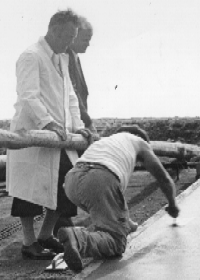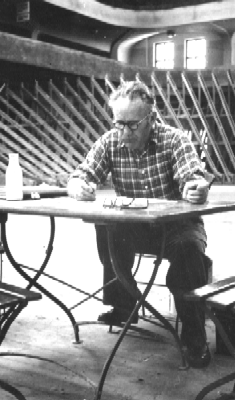
Clemens designed his first cycle
track, a 300 m long, open-air track from wood.
His next task was an indoor cycle
track in his home-town Muenster, only 160 m long. This track became his
object of evolution. Since he was not satisfied with the form of the track
as a rider, he tried all possible variations on this track as an architect.
